Every evening in our old house, always around the same time, we'd hear the rumpeta-rumpeta-rumpeta on the roof.
"The possums are up," someone would announce, because this was only the beginning of a whole nighttime of noises.
There'd soon be the rustling bushes, the overladen branches scraping on the windows, that unreal gurgling sound, the intermittent screech. When the ABC ran a poll to find Australia's favourite animal sound, the "unsettling" vocals of the brushtail possum came in third-last and I wondered how they did so well.
In the daytime, the possums snoozed in our garage, curled up inside the roller door, or in between the rafters, tucked into a comfy nest of branches they'd dragged in from the bay tree. We'd try to close off their entrances, and they'd just find a new way. They stank, but they also had big brown eyes and sometimes adorable babies clinging to their backs.
When we moved out, the new tenants told us that the landlord had taken the garage off the lease. They could use it if they wanted, but it would be at their own risk. The garage belonged to the possums now. I had to laugh. This had always been the case, but now it was official.
Our new house is only one suburb away but it's almost entirely possum-free. You can leave an empty cardboard box in the garage and the next day it remains an empty cardboard box, without even a hint of possum inside. When you put the bins out late, you'll see possums dashing up the trunks of the trees on the street, but they must have no interest in using our roof as a thoroughfare, because we never hear them.
We sleep soundly, all through the night.
But something is missing.
Having complained about the possums for so many years, it's ridiculous to even think it, but it's true: I miss them.
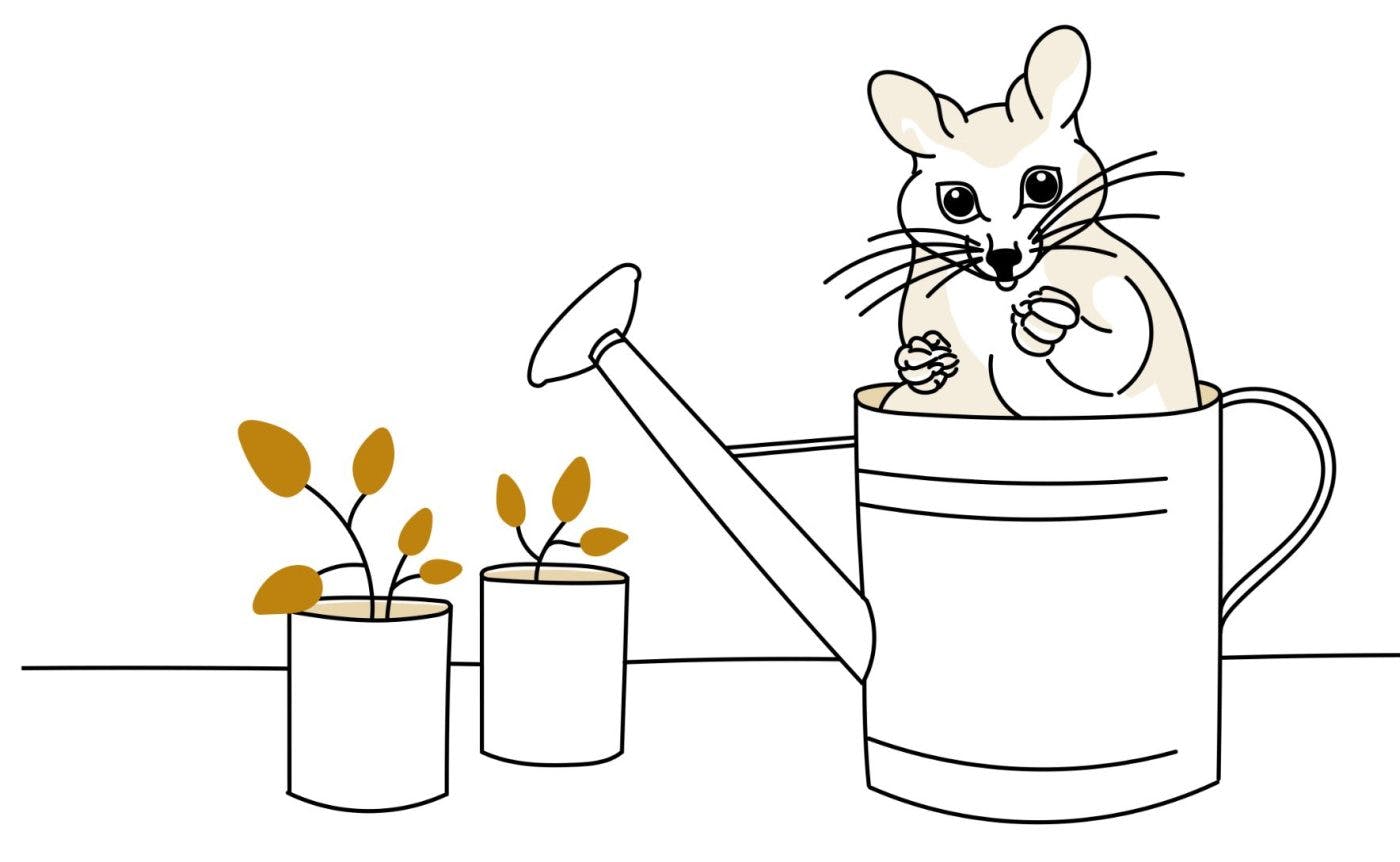
Fifteen years ago, an urban geographer, Associate Professor Emma Power, interviewed a group of Sydneysiders about their experiences, similar to mine, of cohabiting with possums.
Her findings showed that participants had "paradoxical" feelings about their housemates. Yes, the possums were destructive and disruptive, and yet also, they were a comforting presence in the lives of the residents.
They said that while they wouldn't necessarily choose to cohabit with possums, the fact they did made them feel more connected to their surroundings. They gave the possums names and took pride in them, like they were family members, just ones who happened to use the ceiling cavity as a toilet.
The possums, Associate Professor Power concluded, created a feeling of "homeyness".
I read this study and I knew what my problem was. I didn't exactly want possums in our new house, but without them, it just didn't feel as homey.
I started asking people if they knew what I was talking about. In response I heard a stream of stories: there's the garden magpie called Maggie; Old Seven Legs, the huntsman, who lives in the spare room; the skink who always stops to say hello at the washing line.
My colleague Elsie told me about the time her family received a postcard from a friend addressed to all human members of the household and additionally: Dotty (the dog), Shadow (the cat), Bluey (the blue-tongue lizard that lived in the backyard), and Penelope (the possum that lived in the roof). Upon reading it, Elsie's mum responded, outraged, "What about Bocky?" Bocky was the frog that lived in the garden. All these creatures lived at the same address, after all.
But what business does a wild animal have in contributing to our domestic bliss?
And isn't the whole idea of a home that it keeps the wild things, and their unsettling noises, on the other side of the walls?
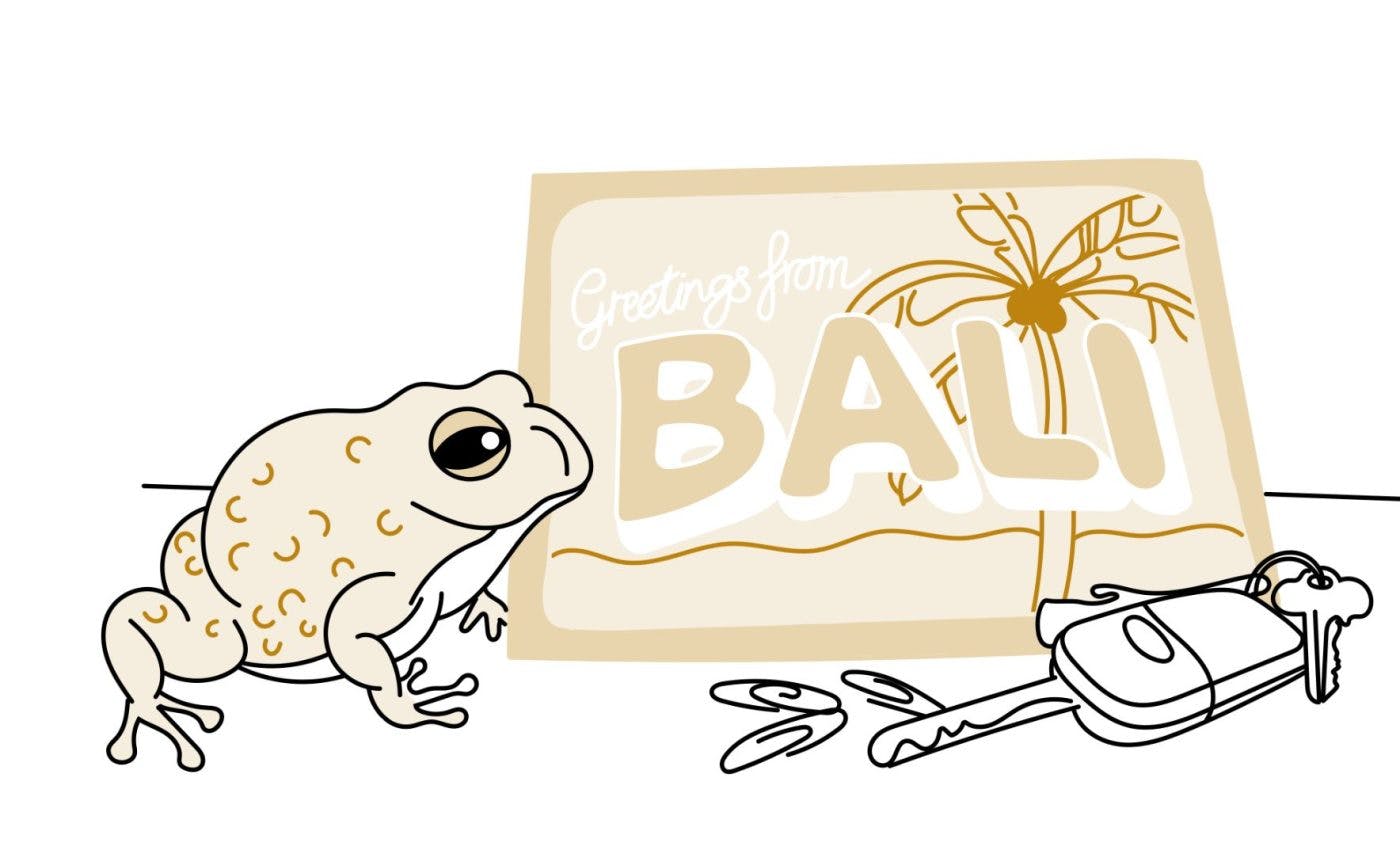
Dr Pele Cannon tells me, fondly, about the wombat who used to turn up at the window of her family's home every evening to sneak a look at the humans inside.
She researches human and non-human coexistence at the Fenner School of Environment and Society at ANU. In the acknowledgements of her PhD thesis, she thanks "all the non-humans throughout my life who told me their stories, taught me their ways, and didn't let me get away with anything." She seems like the right person to ask about the homeyness generated by wild animals, and she is.
"I love this question," she says. "And I think the answer is it's about feeling grounded."
As humans, we can get very up in our own heads, she explains. "But when you see an animal doing its animal thing, especially over repeat visits, it really brings you back down to Earth, and into our physical, embodied existence."
Anyone who has looked up from their laptop to momentarily watch a bird outside their window knows this feeling. There's a disjunction, between the supposedly important contents of our computer screen and the bird, outside, unbothered by them, which makes us take a reality check.
"Our homes are so curated and organised, that another being - especially a wild, uninvited one - disrupts that order," she continues. But it's a good kind of disruption: "It forces us into the presence of the rhythms of life. It's humbling." (Yes, I think. Like our garage was humbled.)
But if the animals are just going about their animal lives, isn't it actually a case of Main Character Syndrome to imagine there's any connection going on between us? Presumably they don't care about us at all.
Dr Cannon spent two years living and studying in a wolf sanctuary in the United States. She says it taught her that actually, animals perceive us well before we perceive them, and from far greater distances. There are so many more birds, she says, watching us potter around in our garden and walk to the bus every day, than we could ever realise.
"We are a component of their world," she says.
"And when we notice that, it contributes to the homeyness. It's a participatory feeling with nature, and that's quite soothing."
And I have to accept that this is actually right, even though it feels entirely against the odds. The possums pooing on our deck really were soothing.
But it shouldn't be that surprising. As Ruby Ekkel points out to me, this idea of a wild animal offering comfort isn't new at all.
Ekkel, from the ANU School of History, is doing a PhD on European colonisers' changing interactions with Australian native animals. She notes that when homesick settlers deliberately introduced animals - invasive species, as we now know them - they were doing exactly this: trying to "over-engineer the feeling of homeyness".
It's a story most of us know as an ecological disaster, but it's also one which proves "that wild animals, not just pets, can be used to try to foster the pleasures and familiarities of home."
Around the time of Federation, Ekkel continues, the settlers' attitudes towards native species changed. The more "at home" they felt on colonised Aboriginal lands, the more connected they became to Australian native animals as their "fellow citizens".
But this connection wasn't extended to all native species equally. Not all animals are sssssoothing.
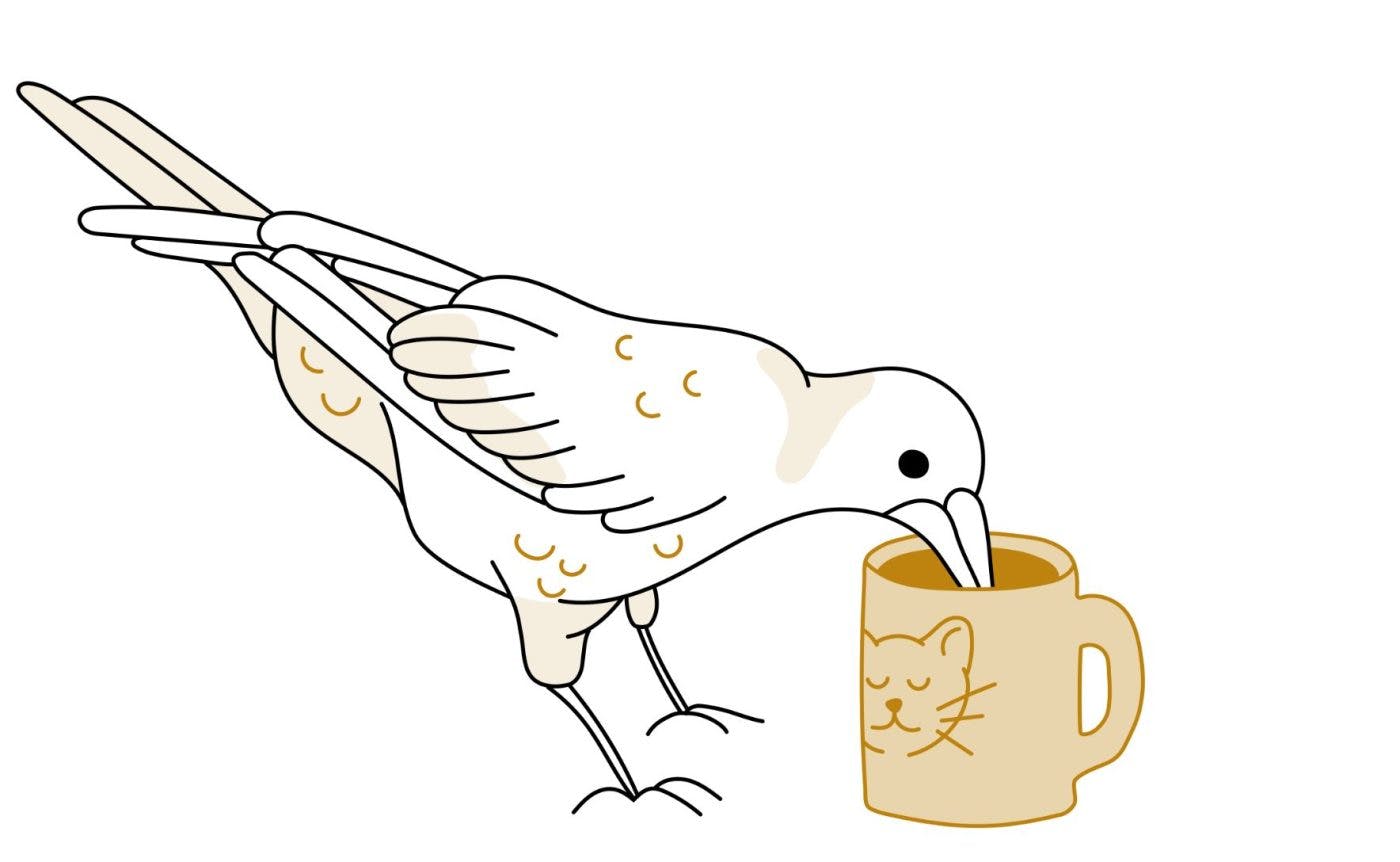
Associate Professor Gavin Smith is Head of the ANU School of Sociology and also a snake ecologist, but he prefers the description of a "snake intermediary".
For the past four years, he has managed the Canberra Snake Tracking Project, which monitors the behaviour of eastern browns once they have been removed from people's properties and translocated to the bush.
He agrees that we experience some animals as homey, but what's more interesting is that we don't experience them all that way.
"We put animals into a hierarchy of desirability," he says. "And, obviously, my work over the years has been with an animal that sits at the very bottom of that list."
When we see an eastern rosella on the lawn, he says, it reminds us that our home is part of a diverse and beautiful ecosystem; we feel lucky. But when a snake slithers past our back shed, we now experience that space as our "private property", and the snake as a trespasser who doesn't belong.
This shows a "profound misunderstanding", Associate Professor Smith says, of "the animals which inhabit this country, and which have done so for millions of years."
"It's humans who have encroached on, and fragmented, the habitats of snakes and other wildlife," he says. "Snakes are willing to share resources with us, if we give them some room. But this is a practice that humans and their companion animals are often reluctant to do, sadly."
"I don't think most Australians have really connected deeply and richly enough with the diversity of nature surrounding them," he continues.
"Many have detached themselves from their natural environment. Sometimes we do have these little epiphany moments" - like when we see a lovely bird at the window -"but nature is not something we can just switch on and switch off as we choose. It is something we are absolutely, intrinsically, connected with all the time."
The animals aren't visiting us in our homes, he says. We live in theirs.
That participatory feeling which Dr Cannon mentioned, it's us participating in their world, not the other way around.
"The wombat coming to the window doesn't connect me to nature," Dr Cannon says. "It reminds me that I am connected already. You don't need to get out into the wilderness to have that connection. You just need to appreciate the things that are around you all the time."
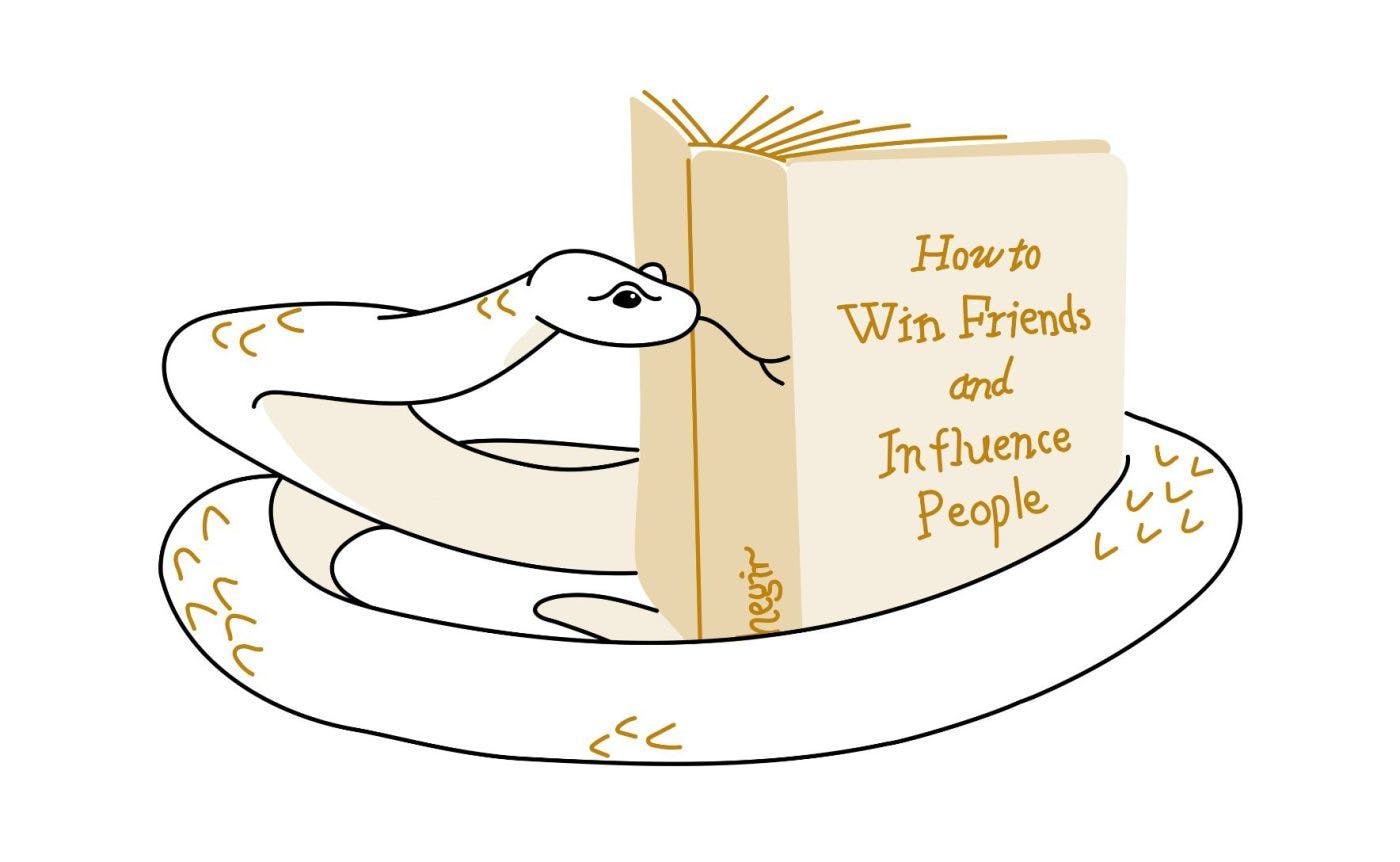
"Let's get one thing straight. A house is not the same as a home," writes the essayist Meghan Daum on the subject of architecture. A house is a physical entity. "Home is an idea, a social construct, a story we tell ourselves about who we are and who and what we want closest in our midst."
It only seems strange that wild animals can change how we feel about our home if we see them as two separate things: the outside and the inside. But actually, homeyness seems to come from the blurring of those boundaries. It's about rescinding control and allowing your surroundings, and its other occupants, to have more of a say. And it was that feeling, not the possums in particular, which was missing from my new house.
Some animals make it impossible for us not to listen to them, but we actually have lots of other housemates, just ones which can't get our attention in the same way. When three Brisbane researchers embarked on a lockdown project to catalogue every animal living with them in their Queenslander and its garden, they identified 1,150 different species. It shows that every house has the capacity to be homey, if we let it.
"You grow a home," Daum continues. "You let it unfold on its own terms. You wait for it."
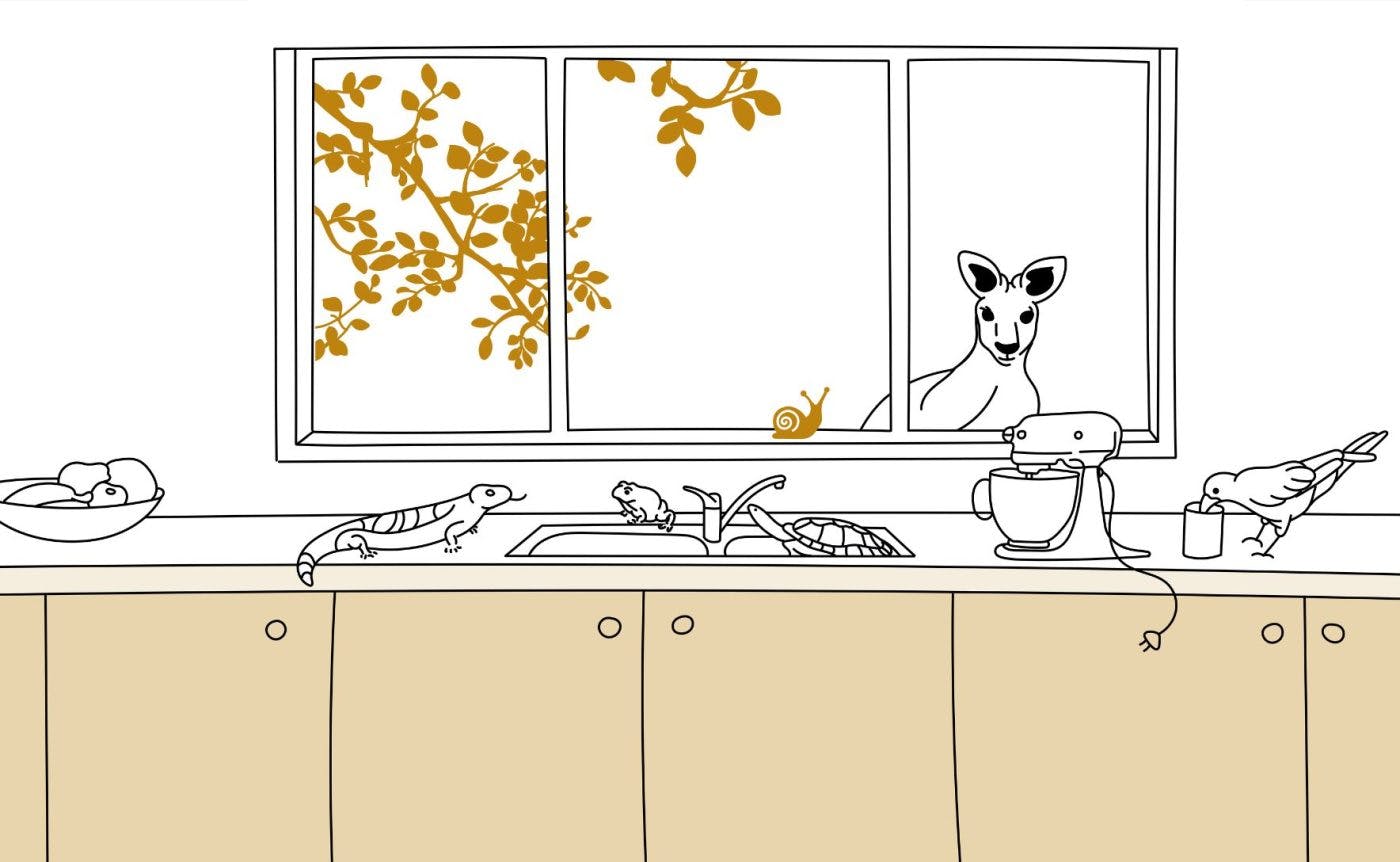
It's 4am and I am lying awake in our new house, which isn't that new anymore. Also, I am no longer sleeping through the night. The extremely loud, overdramatic call of the male eastern koel -Australia's eighth least-favourite sound -is already going strong. It's the one that goes woo-woooo-WOOOO-WOOOOOO. I'll admit I have cursed this bird in my half-sleep, many times.
It turns up in the spring to find a mate, which is hard because as a type of cuckoo, it was raised by a different species of bird. The reason its call is so loud and carries so far is because this is the only way it can find another unfamiliar koel.
It's a good reason. And now I know I would miss it if it wasn't there. It's also still a bit annoying.
"I'm listening," I say into the darkness.
And he answers back. "Woo-woooo-WOOOO-WOOOOOO."
For the both of us, it sounds like home.
This article first appeared at ANU College of Science.






